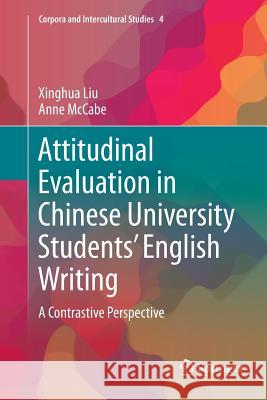Attitudinal Evaluation in Chinese University Students' English Writing: A Contrastive Perspective » książka
topmenu
Attitudinal Evaluation in Chinese University Students' English Writing: A Contrastive Perspective
ISBN-13: 9789811348754 / Chiński / Miękka / 2019 / 141 str.
Attitudinal Evaluation in Chinese University Students' English Writing: A Contrastive Perspective
ISBN-13: 9789811348754 / Chiński / Miękka / 2019 / 141 str.
cena 201,24
(netto: 191,66 VAT: 5%)
Najniższa cena z 30 dni: 192,74
(netto: 191,66 VAT: 5%)
Najniższa cena z 30 dni: 192,74
Termin realizacji zamówienia:
ok. 22 dni roboczych
Dostawa w 2026 r.
ok. 22 dni roboczych
Dostawa w 2026 r.
Darmowa dostawa!
Kategorie:
Kategorie BISAC:
Wydawca:
Springer
Seria wydawnicza:
Język:
Chiński
ISBN-13:
9789811348754
Rok wydania:
2019
Wydanie:
Softcover Repri
Ilość stron:
141
Waga:
0.23 kg
Wymiary:
23.39 x 15.6 x 0.84
Oprawa:
Miękka
Wolumenów:
01
Dodatkowe informacje:
Wydanie ilustrowane











